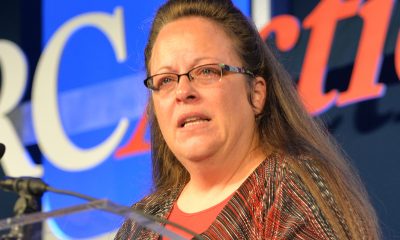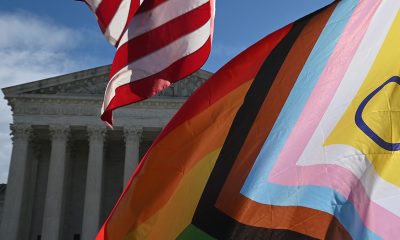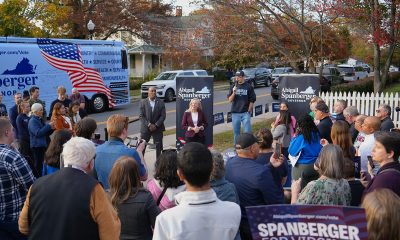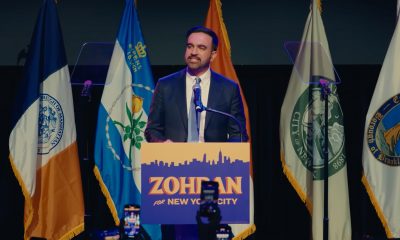Books
The friendship between a first lady and a ‘Firebrand’
Pauli Murray, Eleanor Roosevelt bonded during civil rights movement
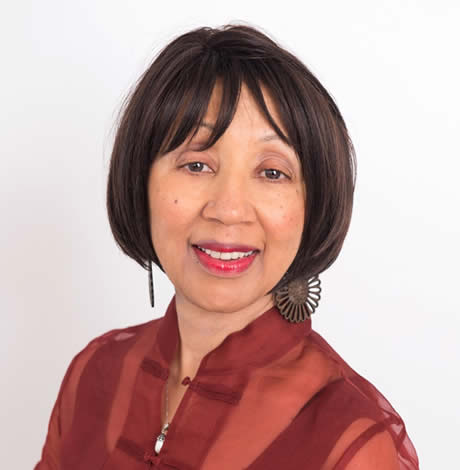
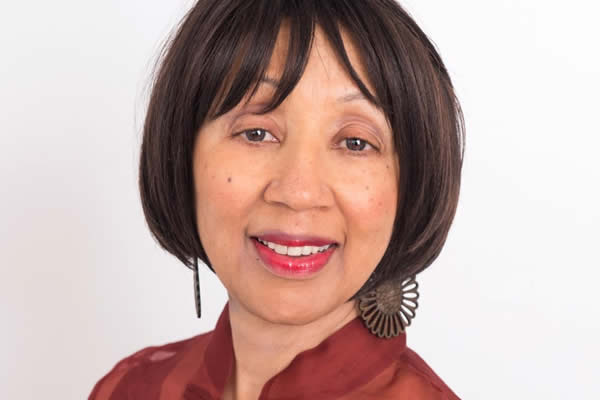
Patricia Bell-Scott explores the friendship between Eleanor Roosevelt and Pauli Murray in her new book.
Most of us would be proud to have earned a degree, written an acclaimed book of poetry or memoir, worked tirelessly for civil rights and have been part of a friendship that fostered human rights.
Pauli Murray, the groundbreaking African-American activist, lawyer, writer and priest, who lived from 1910-1985 and was attracted to women, did all this and much more. For nearly 25 years, Murray the granddaughter of a mixed-race slave, was a friend of Eleanor Roosevelt, whose privileged background entitled her to belong to the Daughters of the American Revolution. (Roosevelt resigned from the DAR in 1939 when the group prohibited the renowned African-American singer Marian Anderson from performing at Constitution Hall in Washington, D.C.)
In her compelling new book “The Firebrand and the First Lady: Portrait of a Friendship: Pauli Murray, Eleanor Roosevelt, and the Struggle for Social Justice,” Patricia Bell-Scott, editor of the anthology “All the Women Are White, All the Blacks Are Men, but Some of Us Are Brave,” tells the story of this extraordinary relationship. Bell-Scott is professor emerita of women’s studies and human development and family science at the University of Georgia. Her previous books include: “Life Notes: Personal Writings by Contemporary Black Women” and “Double Stitch: Black Women Write about Mothers and Daughters,” which won the Letitia Woods Brown Memorial Book Prize.
From 1938-1962, their friendship was sustained by some 300 postcards and letters as well as personal visits. The relationship began when Murray, 27, working for the WPA, a New Deal agency, sent Eleanor Roosevelt a letter protesting a speech Franklin Delano Roosevelt had made at the University of North Carolina. (The university had refused to admit Murray as a student because she was black.) The friendship continued until Roosevelt, 26 years older than Murray, died in 1962.
Murray earned three law degrees, organized sit-ins in the 1940s while a student at Howard University against eateries that discriminated against people of color, participated in bus boycotts 15 years before Rosa Parks and created the legal strategy that ensured that sex discrimination was included in the Civil Rights Act.
A co-founder of the National Organization for Women, Murray wrote the memoir “Proud Shoes,” the well-regarded poetry collection “Dark Testament” as well as numerous essays and books. In 1977, she became one of the first women to be ordained as a priest by the Episcopal Church. Though Murray hadn’t been involved in writing it, in 1971 Ruth Bader Ginsburg, in an homage to Murray’s work, listed her as a co-author in her first brief before the Supreme Court.
Born in Baltimore, Murray didn’t use her given name “Anna Pauline.” Her father was a teacher and her mother was a nurse. At age three, after her mother died, Murray went to Durham, N.C., where she lived with her grandparents and two of her aunts, one of whom became her adoptive mother. In her childhood, Murray’s father, after contracting what was thought to be encephalitis, suffered from “unpredictable attacks of depression and violent moods.” Murray wasn’t ashamed of her sexual orientation and was in a long-term relationship with Irene, “Renee” Barlow. Yet, because of homophobia and her race, she was often denied employment in the government and the private sector.
It’s no wonder that it took Bell-Scott 20 years to write “Firebrand.” Recently, she talked with the Blade about the book and the friendship between Murray and the woman, who Murray called “Mrs. R.”
“This was not something I intended to do,” Bell-Scott said of “Firebrand.” “I was working on another project at the time.”
Then in 1983, Bell-Scott asked Murray to serve as a consulting editor to “SAGE: A Scholarly Journal of Black Women,” of which she was a co-founding editor. Though Murray couldn’t do SAGE, she wrote a letter of “encouragement” to Bell-Scott. “Pauli wanted to work on her autobiography,” she said.
In a follow-up to this letter, Murray wrote to Bell-Scott, “You need to know some of the veterans of the battle whose shoulders you now stand on.”
She didn’t say, “know me better,” Bell-Scott said, “but she did say she took great pride in her work as a member of the subcommittee on legal rights of the President’s Commission on the Status of Women. (President John F. Kennedy appointed Eleanor Roosevelt chair of the commission.)
Bell-Scott made notes of what she wanted to talk about with Murray when her writing project was finished. “But I didn’t get the chance —18 months later, she died of pancreatic cancer,” she said. “Her letter haunted me. Quite a few years later, I decided I was still so haunted by her comment about knowing the veterans on whose shoulders you’re standing on.”
After examining the collection of Murray’s letters at the Schlesinger Library at Harvard University and the collection of Roosevelt’s letters at the Franklin D. Roosevelt Library, Bell-Scott said, she “immediately recognized that their relationship deserved attention.” Their friendship is mentioned only briefly by historians and biographers.
Despite the fact that Murray and Roosevelt came from very different backgrounds, they had a lot in common, Bell-Scott said. “To begin with, Anna was the given name for both of them and they never used it,” she said. “They both lost their parents before their teens and were sent to live with elderly kin.”
They were sensitive kids who grew up to be compassionate women with a thirst for justice, Bell-Scott said. “Even though she was first lady, people made fun of Eleanor’s appearance and ridiculed her teeth,” she added. “Pauli was boyish looking. People poked fun at how she looked.”
Murray and Roosevelt loved their fathers who suffered from mood disorders and alcoholism respectively. Though they were outspoken and highly energetic in their quest for social justice, “people were often surprised to learn that Pauli and Eleanor were both shy,” Bell-Scott said. “It took them tremendous psychic energy to overcome their shyness.”
Both were voracious readers and avid writers. Though she was a committed social justice activist, lawyer and priest, writing was what was closest to Murray’s heart, Bell-Scott said. “Pauli couldn’t turn away from activism,” she said, “but if there were any regrets – she would have liked to have written more.”
Roosevelt, too, was committed to her writing, Bell-Scott said. “Eleanor wrote her ‘My Day’ column even when she was first lady,” she said. “After FDR’s death, she reported on Russia and pursued other writing projects.”
Their sense of well being was dependent on having meaningful work and exercise, Bell-Scott said. “They had a talent for friendship. And they loved dogs. Eleanor liked Scotties and Pauli liked mutts and strays.”
Murray would work herself into exhaustion and crash, Bell-Scott said. “She suffered from mood swings which weren’t properly diagnosed as a thyroid disorder until Pauli was in her 40s,” she said. “Eleanor suffered episodes of depression.”
Their friendship was the context that allowed Murray and Roosevelt to grow into the “transformative leaders that we know them as,” Bell-Scott said. “When they first met, Pauli was an impatient young radical … Eleanor felt it was important to always consider taking social justice action with great caution – to always follow the muted action on civil rights of the Roosevelt administration.” (FDR never publicly pushed Congress to speak out against lynching, Bell-Scott said.)
Later in their lives, Bell-Scott said, Murray had moved from radical left to left of center – voting for Lyndon Johnson as a registered Democrat after decades of voting for Socialist candidates. By the 1960s, Roosevelt had put her life on the line at civil rights workshops and demonstrations.
“When I look at the issue of Pauli’s sexuality, I think of the social context of the time. Here is a woman coming to adulthood in the 1920s, 30s and 40s,” she said. “Homosexuality is defined as a mental disorder until the 1970s. Pauli, a very bright woman, reads the scientific literature.”
Added to this, Bell-Scott said, was the homophobia of McCarthyism, which considered LGBT people to be a security threat. “Pauli was a black woman lawyer,” she said, “ that’s an unconventional career for a woman. There are rumors about her sexuality and her mental health. She is living with discrimination on so many fronts.”
But Murray wasn’t ashamed of who she was, Bell-Scott said. “She was raised as a child by elder kin with Victorian values. You didn’t talk about sexuality.”
From reading Murray’s letters and sermons from later in her life, “it seems to me that Pauli began to publicly embrace herself,” Bell-Scott said.
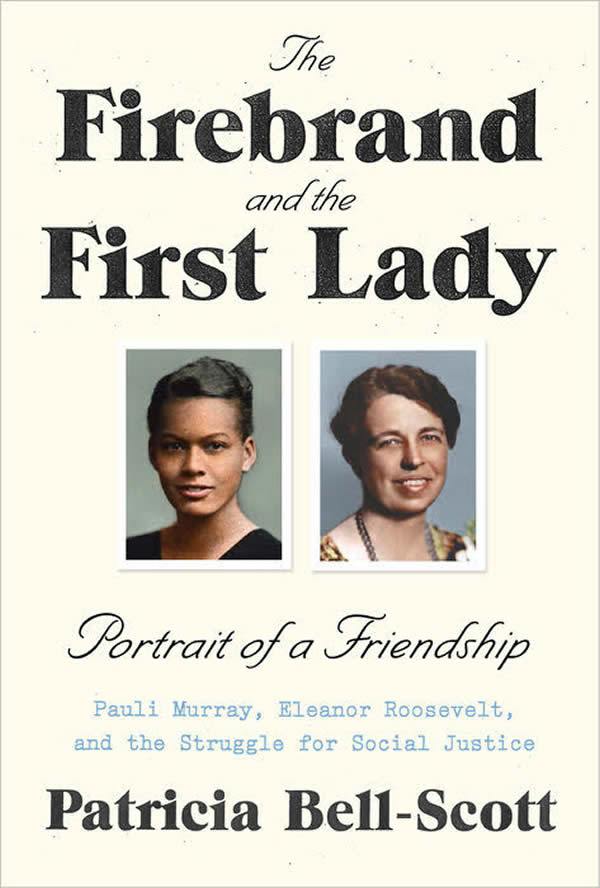
Books
New book highlights long history of LGBTQ oppression
‘Queer Enlightenments’ a reminder that inequality is nothing new
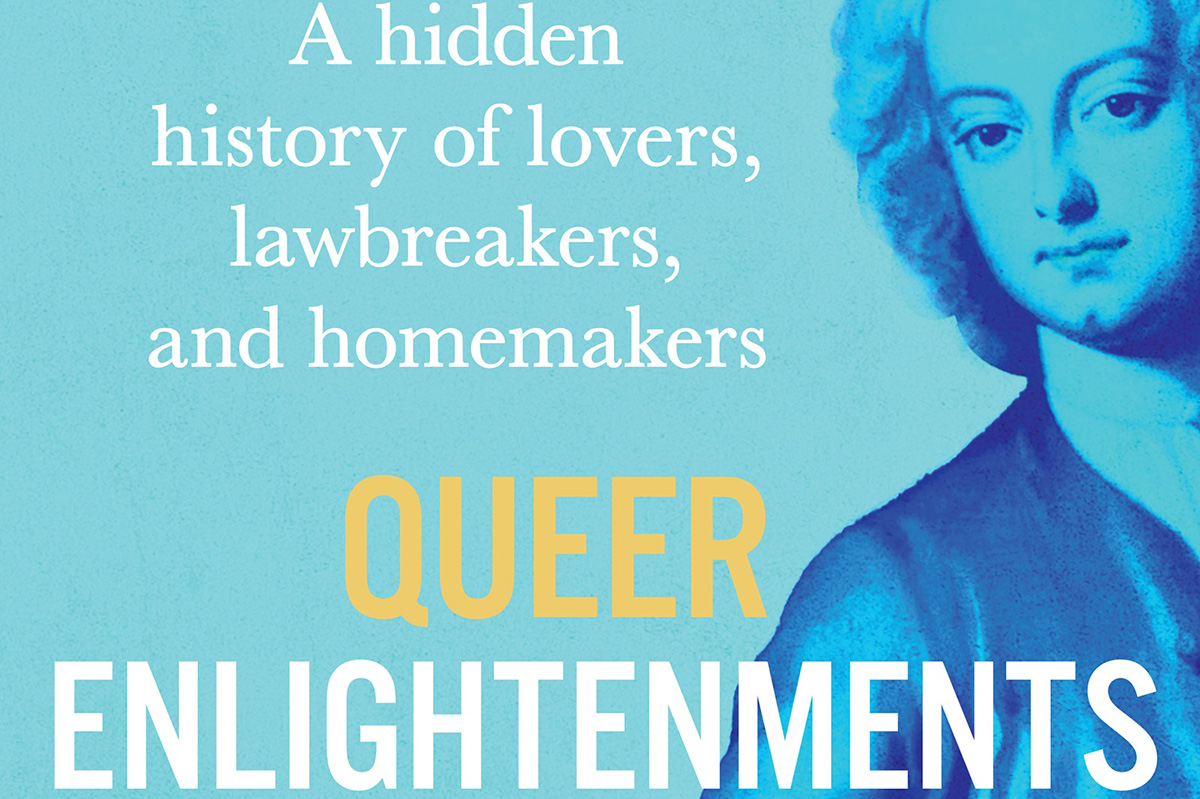
‘Queer Enlightenments: A Hidden History of Lovers, Lawbreakers, and Homemakers’
By Anthony Delaney
c.2025, Atlantic Monthly Press
$30/352 pages
It had to start somewhere.
The discrimination, the persecution, the inequality, it had a launching point. Can you put your finger on that date? Was it DADT, the 1950s scare, the Kinsey report? Certainly not Stonewall, or the Marriage Act, so where did it come from? In “Queer Enlightenments: A Hidden History of Lovers, Lawbreakers, and Homemakers” by Anthony Delaney, the story of queer oppression goes back so much farther.

The first recorded instance of the word “homosexual” arrived loudly in the spring of 1868: Hungarian journalist Károly Mária Kerthbeny wrote a letter to German activist Karl Heinrich Ulrichs referring to “same-sex-attracted men” with that new term. Many people believe that this was the “invention” of homosexuality, but Delaney begs to differ.
“Queer histories run much deeper than this…” he says.
Take, for instance, the delightfully named Mrs. Clap, who ran a “House” in London in which men often met other men for “marriage.” On a February night in 1726, Mrs. Clap’s House was raided and 40 men were taken to jail, where they were put in filthy, dank confines until the courts could get to them. One of the men was ultimately hanged for the crime of sodomy. Mrs. Clap was pilloried, and then disappeared from history.
William Pulteney had a duel with John, Lord Hervey, over insults flung at the latter man. The truth: Hervey was, in fact, openly a “sodomite.” He and his companion, Ste Fox had even set up a home together.
Adopting your lover was common in 18th century London, in order to make him a legal heir. In about 1769, rumors spread that the lovely female spy, the Chevalier d’Éon, was actually Charles d’Éon de Beaumont, a man who had been dressing in feminine attire for much longer than his espionage career. Anne Lister’s masculine demeanor often left her an “outcast.” And as George Wilson brought his bride to North American in 1821, he confessed to loving men, thus becoming North America’s first official “female husband.”
Sometimes, history can be quite dry. So can author Anthony Delaney’s wit. Together, though, they work well inside “Queer Enlightenments.”
Undoubtedly, you well know that inequality and persecution aren’t new things – which Delaney underscores here – and queer ancestors faced them head-on, just as people do today. The twist, in this often-chilling narrative, is that punishments levied on 18th- and 19th-century queer folk was harsher and Delaney doesn’t soften those accounts for readers. Read this book, and you’re platform-side at a hanging, in jail with an ally, at a duel with a complicated basis, embedded in a King’s court, and on a ship with a man whose new wife generously ignored his secret. Most of these tales are set in Great Britain and Europe, but North America features some, and Delaney wraps up thing nicely for today’s relevance.
While there’s some amusing side-eyeing in this book, “Queer Enlightenments” is a bit on the heavy side, so give yourself time with it. Pick it up, though, and you’ll love it til the end.
The Blade may receive commissions from qualifying purchases made via this post.
Books
A history of lesbian workarounds to build family
Fighting for the right to have and raise kids
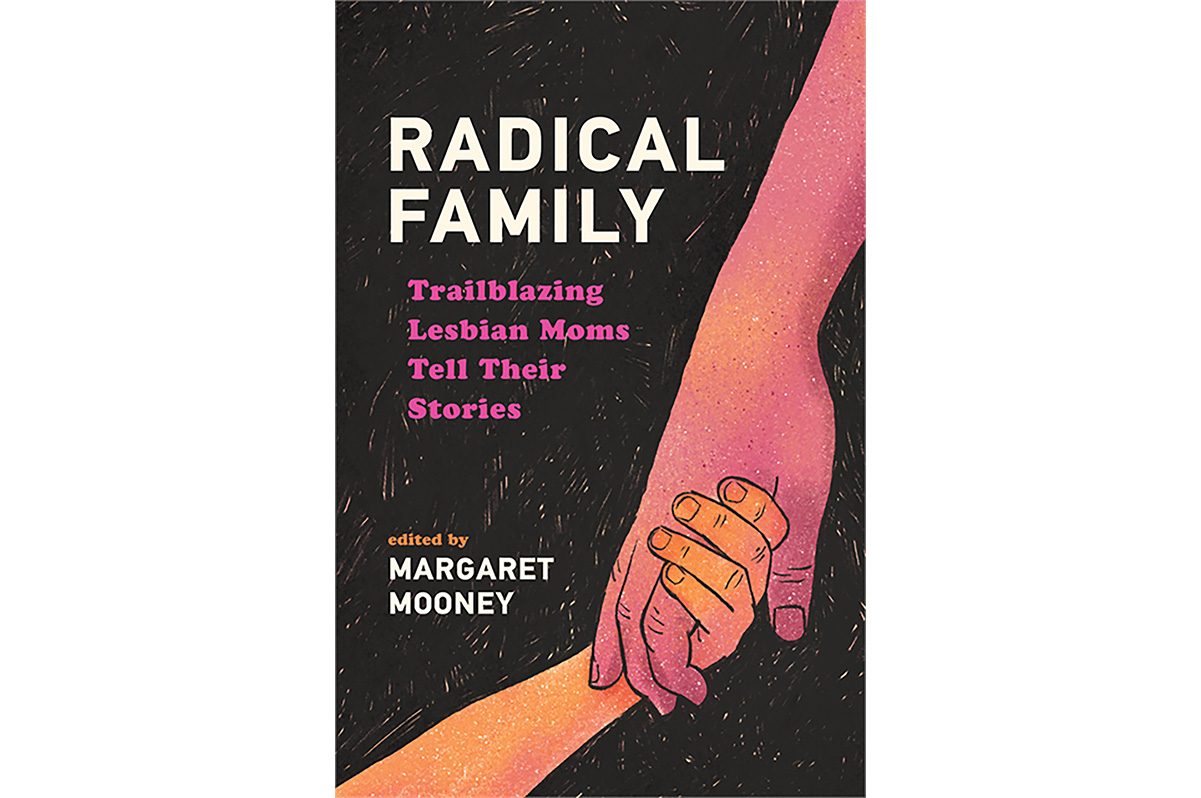
‘Radical Family: Trailblazing Lesbian Moms Tell Their Stories’
Edited by Margaret Mooney
c.2025, Wisconsin Historical Society Press
$20/150 pages
You don’t have a white picket fence with an adorable gate.
The other parts of the American Dream – the house in the suburbs, a minivan, and a big backyard – may also be beyond your reach. You’ve never wanted the joyous husband-wife union, but the two-point-five kids? Yeah, maybe that’s possible. As in the new book “Radical Family,” edited by Margaret Mooney, it’s surely more so than it was in the past.

Once upon a time, if a lesbian wanted to raise a family, she had two basic options: pregnancy or adoption. That is, says Mooney, if she was willing to buck a hetero-centric society that said the former was “selfish, unnatural and radical” and the latter was often just simply not possible or even legal.
Undaunted, and very much wanting kids, many lesbians ignored the rules. They built “chains” of women who handed off sperm from donor to doctor to potential mother. They demanded that fertility clinics allow single women as customers. They wrote pamphlets and publications aimed to help others become pregnant by themselves or with partners. They carefully sought lesbian-friendly obstetricians and nurses.
Over time, lesbians who wanted kids were “emboldened by the feminist movement and the gay and lesbian rights movement” and did what they had to do, omitted facts when needed, traveled abroad when they could, and found workarounds to build a family.
This book tells nine stories of everyday lesbians who succeeded.
Denise Matyka and Margaret McMurray went to Russia to adopt. Martha Dixon Popp and Alix Olson raised their family, in part and for awhile in conjunction with Popp’s husband. Gail Hirn learned from an agriculture publication how to inseminate herself. MC Reisdorf literally stood on her head to get pregnant. Mooney says that, like most lesbian parents then, she became a mother “without any safety nets…”
Such “struggles likely will feel familiar as you read about [the] desire to become parents…” says Mooney. “In short, these families are ordinary and extraordinary all at once.”
In her introduction, editor Margaret Mooney points out that the stories in this book generally take place in the latter part of the last century, but that their relevance is in the struggles that could happen tomorrow. There’s urgency in those words, absolutely, and they’re tinged with fear, but don’t let them keep you from “Radical Family.”
What you’ll see inside these nine tales is mostly happy, mostly triumphant – and mostly Wisconsin-centric, though the variety in dream-fulfillment is wide enough that the book is appropriate anywhere. The determination leaps out of the pages here, and the storytellers don’t hide their struggles, not with former partners, bureaucracy, or with roadblocks. Reading this book is like attending a conference and hearing attendees tell their tales. Bonus: photos and advice for any lesbian thinking of parenthood, single or partnered.
If you’re in search of positive stories from lesbian mothers and the wall-busting they did, or if you’ve lived the same tales, this slim book is a joy to read. For you, “Radical Family” may open some gates.
The Blade may receive commissions from qualifying purchases made via this post.
Books
Florida’s war on Black, queer lives hidden no more
New book ‘American Scare’ exposes truth of decades of erasure, attacks
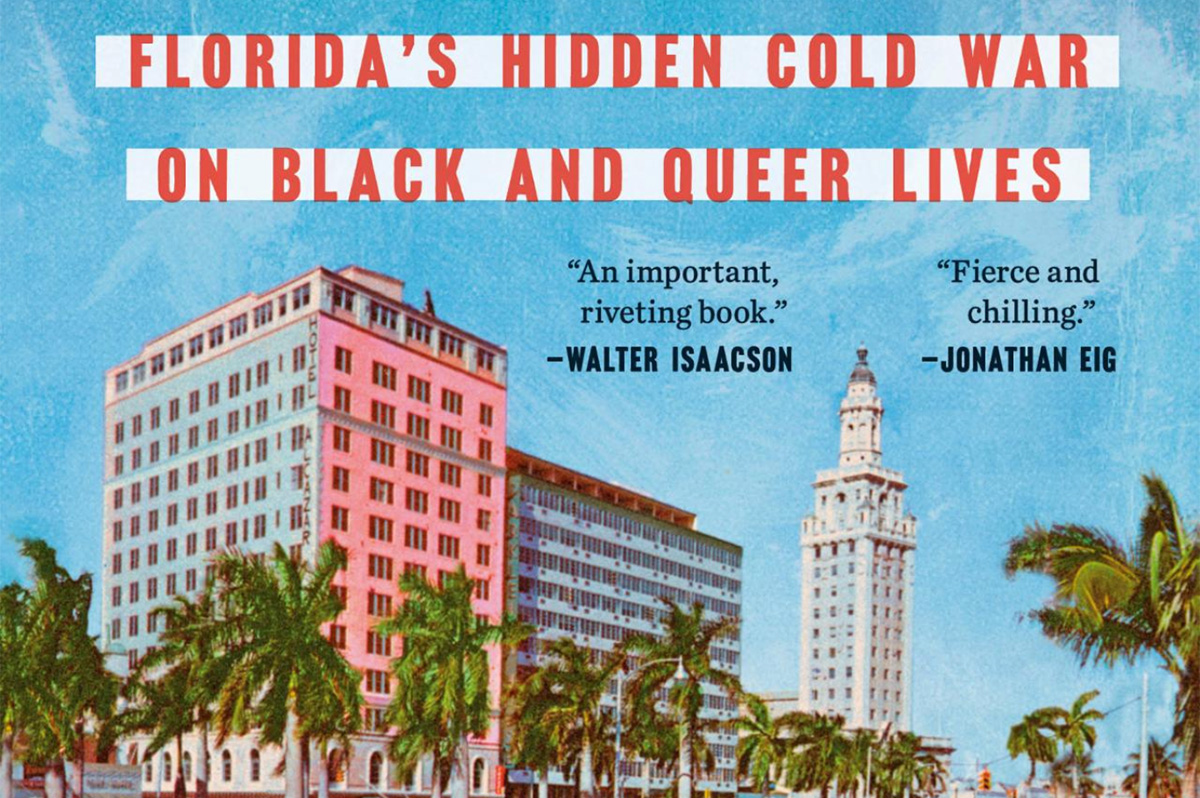
‘American Scare: Florida’s Hidden Cold War on Black and Queer Lives’
By Robert W. Fieseler
“What’s with Florida?,” Bobby Fieseler, disgusted, asked after completing his initial research into the vicious investigation of suspected homosexual teachers by the Florida Legislative Investigation Committee (FLIC) in the 1950s. How did the official animus toward all things queer happen in Florida, Fieseler pitched his publisher. We can be grateful Dutton gave him the green light for “American Scare, Florida’s Hidden Cold War on Black and Queer Lives.”

Fieseler’s book is a masterpiece of archive activism that begins in a rental van escaping Florida with some 20 boxes of historical documents meant to be seen by no one. The cartons contained a secret second copy of materials that had been held back from the jaws of the Florida State Archives in Tallahassee. Soon, more folders would surface with unredacted materials. “There are friends of Dorothy in any system,” he explains his archival detective work with a wink.
What’s with Florida? In the 1950s, it was all about legislators exposing politically helpless homosexuals to justify the committee’s investigations and budgets. The FLIC documents reveal the names of the accused “perverts,” the cops who raided the restrooms, the terrified queer informants and the professional interview techniques that would extract confessions from the victims. On another level, this was about old-school Southern racists determined to stop integration at all costs with intention to weave lies about Communist infiltration of the NAACP. Finally, Fieseler encountered first-hand an official determination to erase and lock-up this history. The statewide obsession with erasing history continues to this day. The Florida Department of Transportation this year painted over the community rainbow crosswalk memorial to the Pulse nightclub massacre victims in Orlando.
“American Scare” is such a fully documented investigation of what unfolded, it will be impossible to paint over the magnitude of this assault. The book bears witness in gory detail to the ruination of private people that exceeds in pure perniciousness the more famous “Lavender Scare.” Although the “Lavender Scare” purged many more individuals, it was about the U.S. Department of State firing public officials slimed as “pinstripe twerps.” The Florida investigations were a statewide purge using a dark politics of exposure of schoolteachers leading private lives. Fieseler quotes Remus Strickland, the head homo-hunter and executive director of the Southern Association of Intelligence Agents formed in response to the Supreme Court’s Brown v. Board of Education desegregation decision (1954), “If the Committee’s first pursuit (race and Communism) was a mandate, its second pursuit (homosexuals) was an opportunity.” Remus (that’s really this Southerner’s name) explained years later without remorse, “We first looked at the University of Florida for Communists….then we came back and did the homosexual purge.” Fieseler’s archival research reveals how far-right politicians and investigators like Strickland characterized Communists, African Americans (through the NAACP) and homosexuals as aligned “treasonously in a subversive societal infestation.”
The whole show was the creation of a wily, populist politician — a Florida “Pork Chopper” — Charley Johns, president of the Florida Senate. “Pork Choppers,” the rural, white Northern Florida wing of the old Democratic Party, controlled the state legislature from the 1930s to the 1960s. They were strongly opposed to integration, Communists, homosexuals, reapportionment and government reform. Johns owned the Charley E. Johns Insurance Agency, which insured state agencies. Fieseler’s history brings these North Florida politicians into grotesque focus. Their “power had lynched history,” he writes about his passion to excavate how they sealed and redacted the records so they would never face responsibility for their actions.
“American Scare” reveals how these Pork Choppers were willing to crush homosexuals as an instrument to maintain power. Their victims were isolated gay and lesbian teachers who could only plead for mercy, vanish or inform on one another. They were entrapped by the system itself. Fieseler tells the story of how Remus Strickland pulled Miss Poston, a physical education teacher out of her classroom surprising her with a tape recorder and a request to give a misdirecting statement about the prevention of child molestation. Suddenly Remus changed the subject: “Miss Poston, in your acts with Miss Bradshaw whom you referred to on this record, would she play the part of the aggressor…..She was known as the butch is that true?….Was there any occasion of any oral copulation?” He closed in for the kill, “Could there have been more than one time”? Miss Poston caved, “Possibly but if so only one more time.” The reel-to-reel tape is turning.
Concert pianist and music teacher William James Neal received the same taped grilling. Remus begins the interview, “You’re an educated Nigra,” confronting Neal with testimony he was a homosexual “nigra.” Years later, Neal remembered, “He told me I would never teach within the continental limits of the United States. He said he had proof I was a homosexual.” An African-American concert pianist, Neal had extensively toured the U.S. playing with major orchestras and hosting his own radio program in Florida. Neal had the self-respect and courage to take his illegal termination to the Florida Supreme Court. In 1962, the court ruled in his favor (Neal v. Bryant) handing Remus Strickland a devastating defeat, writing “The statements accused teachers allegedly made were obviously extracted under a threat of publicity.” Vindicated, William Neal nonetheless left Florida never to return.
There have been resolutions for an acknowledgment and apology. None have advanced through the Republican-controlled legislature occupied with a slew of “Don’t Say Gay” bills. “American Scare’ is larger than a small-bore history of investigations. It is the story of a Great Florida Teacher’s Purge launched to stop integration. Fieseler is done with redactions. He names names. If there is anything redemptive in this Southern hot mess, it is this: Bobby Fieseler, a queer historian, rescued the boxes and delivers readers their contents with history’s gale force.
The Blade may receive commissions from qualifying purchases made via this post.



